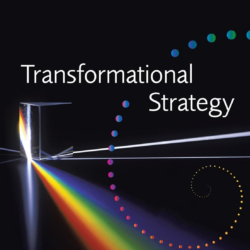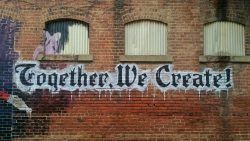Facilitation and Lean – What Do They Have in Common?
Helen Break, CPF, CTF
As a CPF and a CTF who is currently involved in Lean Green Belt training, I have been pleasantly surprised by the number of common elements between professional facilitation and the application of Lean, which engages people to eliminate waste and improve customer service. What follows is a sampling of what I have observed professional facilitation and Lean have in common:
Build Ownership and Trust – Facilitation and Lean, through sincere engagement of the right stakeholders, can increase the ownership of a decision, solution, plan or process. They can also increase trust, and heal conflict or prevent conflict caused from miscommunication or misunderstanding. Understand how to
Creativity – Facilitation asks participants to be creative or innovative in their thinking. To think “outside the box” and, in so doing, to think objectively. The goal is a quantity of ideas, breadth of ideas, originality of ideas, depth/richness of ideas and finally, an integration or synthesize of ideas that move the client forward. Lean seeks the same output from participants in order to objectively identify process improvements that benefit the client and the customer.
Established Process – A facilitator and a Lean practitioner are like a conductor of a symphony, guiding participants through a set process. They are an appreciative witness to a group’s struggle to resolve an issue, create a strategic plan or, in the case of Lean, identify and remove waste. The process, in both cases, can be summarized as a dialogue on the issues, collection of facts/measures of success, reflection/ brainstorming on potential solutions and conclusions, implementation and finally monitoring to ensure sustainability.
Involve Everyone – Facilitation is about inclusivity and participation. With the right voices are at the table, the wiser the outcome. Lean is similarly premised on the involvement of front-line staff who know the process(es) and who will benefit the most from reduced waste and related improvements. Both professions operate under the belief that the group has the answers.
Levels of Proficiency – The IAF currently offers a Certified Professional Facilitator (CPF) designation. ICA Associates also offers a Certified ToPTM Facilitator (CTF) designation. The IAF also has plans to offer a new entry level certification referred to as an “IAF Endorsed Facilitator”, as well as a “CPF Master” and a “CPF Emeritus” designations. Likewise, Lean certification has several levels that can be acquired over time under the tutelage of a Lean advisor. The levels are White, Yellow, Green and Black, one becoming more proficient with training and practice.
Long-term Perspective – Facilitators may engage with a client only once but in many cases, facilitators may build a long-term trusting relationship with clients, working on one project over several years or several different projects. Likewise, Lean requires a long-term commitment that systematically drives continuous improvement within an organization through implementation, continued monitoring and reporting. Both facilitation and Lean are intended to help change an organization’s culture over time through participation.
Open-Ended Questions – Both facilitation and Lean use open-ended questions to draw out insight and existing wisdom, and reflect on past experiences.
Root Cause Analysis – Facilitators ask questions to get beyond symptoms and to the root cause, and ideally reveal an underlying contradiction that can lead more readily to the right solution. Lean also uses root cause analysis (fishbone diagrams, 5 Why’s) to identify the true cause of waste and inefficiency.
Root Words – Lean relies heavily on rapid improvement events called Kaizens. Kai means “change” and zen means “for the better”. The term facilitation stems from the word facil, which means “to make easy”. At the heart of both professions is the intention and desire to achieve improvements for the better and to make it easier for the client to do so.
Rules of Engagement – Facilitators use participation guidelines to keep participants respectful of each other’s points of view and to stress that we need everyone’s wisdom to produce the wisest results. Lean works from this same premise and also establishes rules of engagement.
Third-Party Perspective – A facilitator is brought in as a process consultant meaning that they “guide and do not decide”. They bring an appropriate process to the table and the necessary objectivity to help move the participants to their desired outcome in an environment of trust and openness. Lean teams are comprised of people from outside an area to ensure objectivity and to ensure that questions are asked that challenge the status quo.
Three P’s – Facilitation is about have a clear purpose, engaging people and the process facilitators bring to the table. A basic element of Lean is the 3 P’s – setting a clear purpose (objectives and KPIs), respecting and engaging people and walking the process.
Tool Box – Facilitators have a vast tool box of methods, tools and techniques that can be used separately or in combination to provide the client with the best possible process and desired outcomes. Lean similarly has a very large set of tools. Some of the tools cross both professions. For example, in addition to those mentioned above, both facilitators and lean practitioners share the use of project charters, brainstorming, consensus workshop, gap analysis, cause and effect analysis, small group work, action planning (who, when, how), gantt chart, critical path, process map, force field analysis, effort/impact/readiness assessment and pareto analysis (80/20 rule).
Visioning – Facilitators when they are doing strategic planning start the process with the development of a practical vision. Lean practitioners also have participants identify a desired future state, but this comes later in the process rather than at the beginning.
This has just been a sampling of the similarities between professional facilitation and Lean. My training in Lean will certainly be a benefit in my facilitation work, and my facilitation training will continue to support my Lean endeavours. In summary, these are two very complimentary skill sets.





